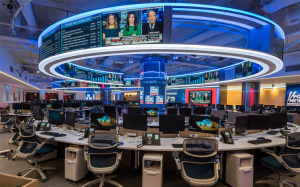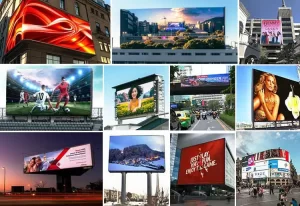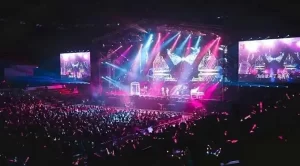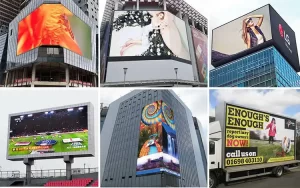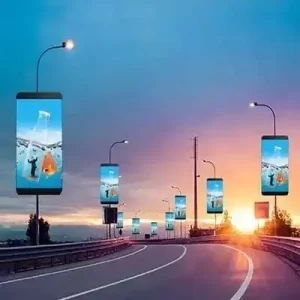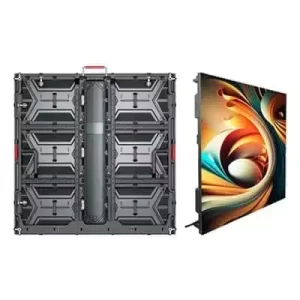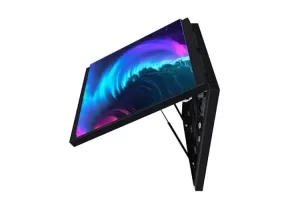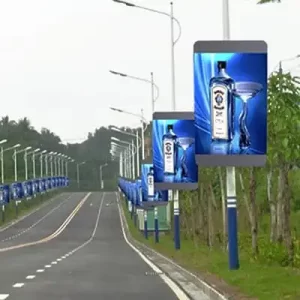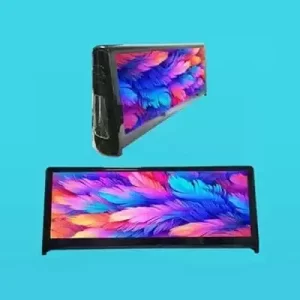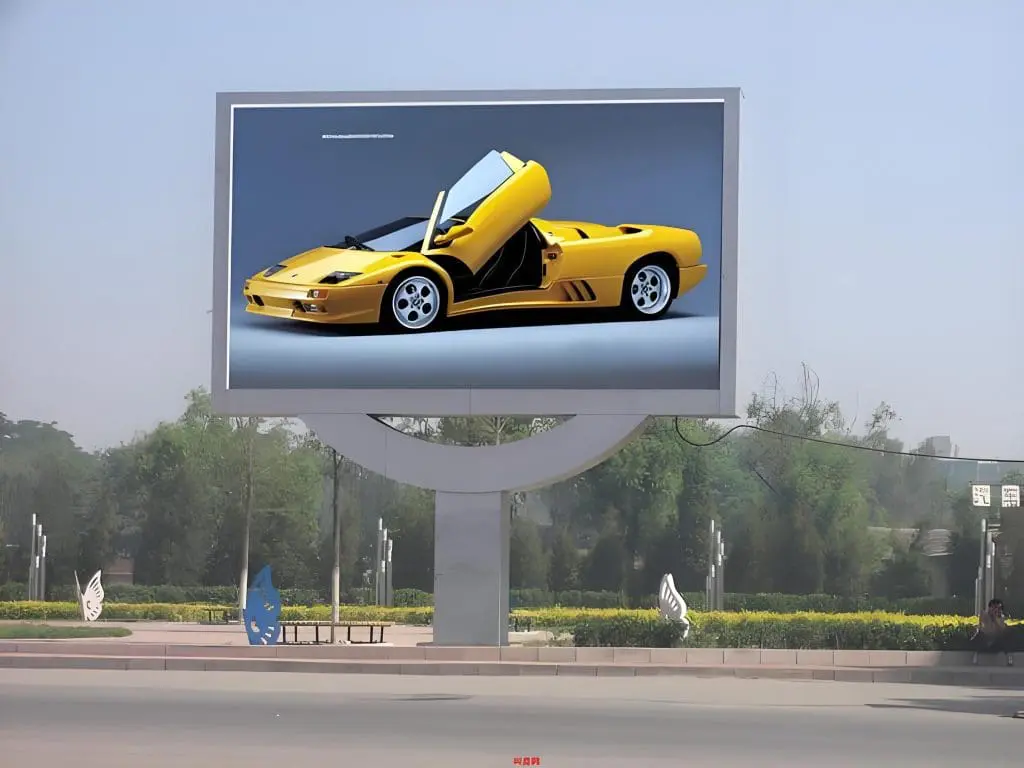
In the fast-paced world of advertising, LED advertising boards have revolutionized the way brands communicate with their audiences. These digital displays, known for their vibrant visuals, durability, and versatility, are now a cornerstone of modern marketing strategies. Whether used for outdoor billboards, retail promotions, or event advertising, an LED advertising board ensures your message captures attention and stands out in any environment.
This article explores the features, benefits, applications, and key considerations when investing in LED advertising boards.
What Is an LED Advertising Board?
An LED advertising board is a digital display made up of Light-Emitting Diodes (LEDs) that emit bright, colorful visuals. These boards are used to showcase advertisements, videos, animations, and real-time information. They are available in various sizes and configurations, making them suitable for both indoor and outdoor advertising.
Innovative Features of Digital Advertising Displays
1. High Brightness and Visibility
- LED boards deliver powerful brightness levels, ensuring visibility even in direct sunlight or brightly lit environments.
- Adjustable brightness settings allow for optimal performance in both day and night.
2. Vivid and Dynamic Visuals
- With high-definition resolution and vibrant colors, LED advertising boards create eye-catching visuals that grab attention instantly.
- They support videos, animations, and images, providing dynamic content options.
3. Durability
- Outdoor LED boards are designed to withstand harsh weather conditions, including rain, wind, and extreme temperatures.
- They feature IP65 waterproof ratings and robust construction for long-term use.
4. Energy Efficiency
- LED boards consume significantly less power compared to traditional lighting or display technologies, reducing operational costs.
5. Customizable Sizes and Configurations
- LED advertising boards are modular, allowing for custom sizes and shapes to fit specific advertising spaces.
- Options include flat, curved, and even 3D designs.
6. Remote Content Management
- Advanced LED boards include software for remote control, enabling advertisers to update content in real-time from anywhere.
7. Long Lifespan
- LEDs have a lifespan of up to 100,000 hours, making them a cost-effective long-term investment.
Benefits of LED Advertising Boards
1. Increased Visibility
The brightness and dynamic nature of LED boards make them highly visible, even from a distance. This ensures your advertisement reaches a large audience.
2. Attracts More Attention
Dynamic content, such as videos and animations, is far more engaging than static displays, helping your brand stand out in crowded advertising spaces.
3. Flexibility in Content
LED boards allow you to display a variety of content formats, including videos, slideshows, and real-time updates. This flexibility makes it easy to tailor your message to different audiences.
4. Cost-Effective Advertising
While the initial investment may be higher, LED boards reduce long-term costs through energy efficiency, low maintenance, and the ability to update content digitally without printing new materials.
5. Enhances Brand Image
Modern and innovative, LED advertising boards project a cutting-edge image for your brand, leaving a lasting impression on viewers.
Popular Applications for LED Advertising Displays

1. Outdoor Advertising
- Billboards: Large LED boards placed along highways or in city centers for maximum exposure.
- Digital Signage: Installed in high-traffic areas to display promotional content, announcements, or public messages.
2. Retail and Shopping Malls
- Storefront Displays: Draw customers into stores with bright, engaging visuals.
- In-Mall Advertising: Promote sales and events using strategically placed LED boards.
3. Events and Exhibitions
- Trade Shows: Showcase products and services with dynamic visuals that attract attendees.
- Concerts and Festivals: Use LED boards for sponsor advertisements, schedules, or live feeds.
4. Transportation Hubs
- Airports and Train Stations: Display advertisements, schedules, and public service announcements.
- Bus Stops: Smaller LED boards for targeted, localized advertising.
5. Sports Arenas
- Scoreboards: Display scores, live game action, and sponsor advertisements.
- Perimeter Boards: Digital banners around the field or court for dynamic, rotating ads.
6. Smart Cities
- Integrated into urban infrastructure to display real-time traffic updates, weather conditions, and advertisements.
How to Choose the Right LED Advertising Board
1. Determine the Location
- Indoor LED Boards: Focus on resolution and brightness suitable for controlled lighting conditions (400–1,500 nits).
- Outdoor LED Boards: Require higher brightness (3,000–5,000 nits) and weatherproof construction to handle environmental factors.
2. Choose the Right Pixel Pitch
Pixel pitch refers to the distance between LED pixels and determines the screen’s resolution.
- P1.2–P2.5: Suitable for indoor displays with close viewing distances.
- P3–P5: Ideal for medium-sized outdoor or indoor boards.
- P6–P10+: Best for large outdoor billboards viewed from long distances.
3. Screen Size
Select a size that fits your advertising space and ensures visibility from the intended viewing distance.
4. Content Management Features
- Opt for boards with remote content management systems for easy updates.
- Look for features like scheduling, multi-screen control, and compatibility with various media formats.
5. Brightness and Contrast
Ensure the LED board offers sufficient brightness and high contrast ratios for clear visibility in any lighting condition.
6. Energy Efficiency
Choose energy-efficient LED boards to minimize operating costs, especially for 24/7 advertising.
7. Budget
- Entry-level small LED boards: $2,000–$5,000.
- Medium-sized boards: $10,000–$20,000.
- Large outdoor billboards: $25,000–$100,000+.
Cost of LED Advertising Boards
The cost of an LED advertising board depends on factors like size, pixel pitch, and additional features. Below is an estimate:
| Size | Pixel Pitch | Estimated Cost |
|---|---|---|
| Small (2–5 m²) | P2–P4 | $2,000–$10,000 |
| Medium (5–20 m²) | P3–P6 | $10,000–$30,000 |
| Large (20+ m²) | P6–P10+ | $30,000–$100,000+ |









